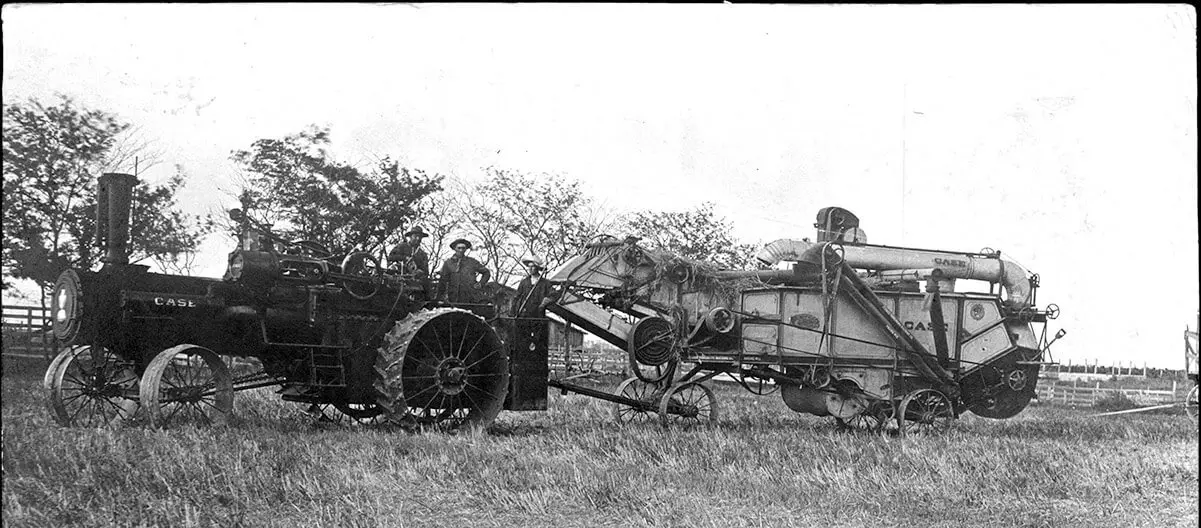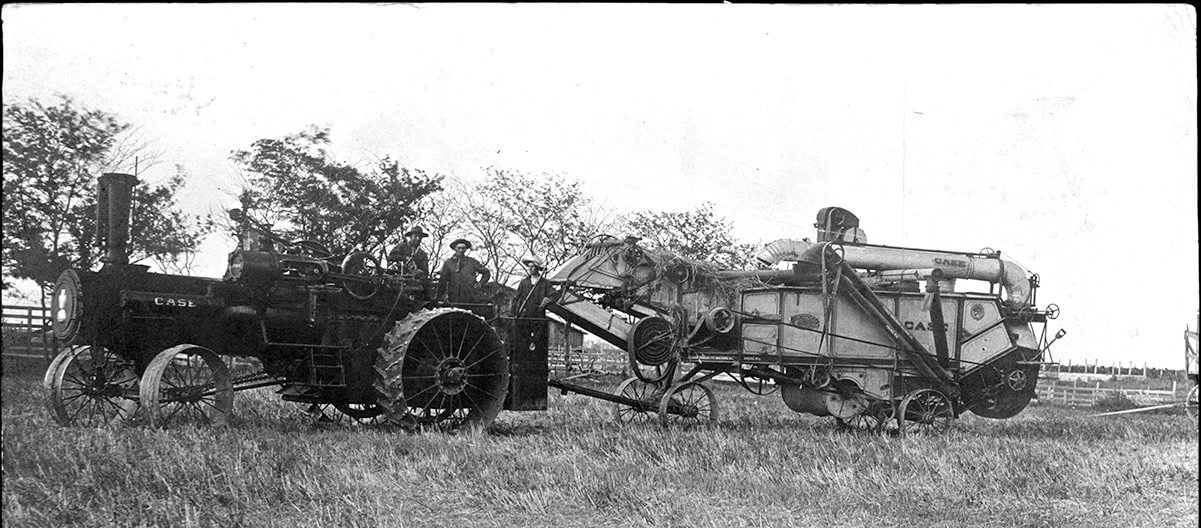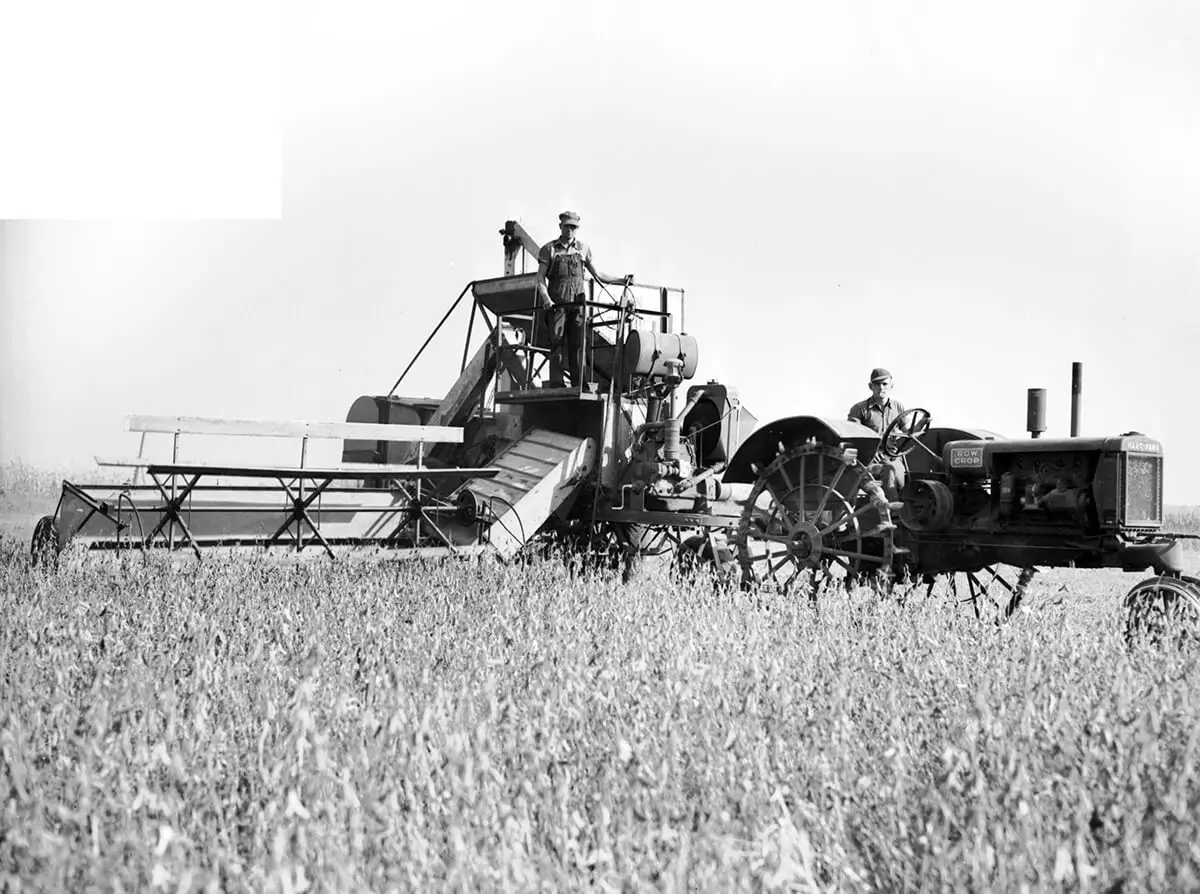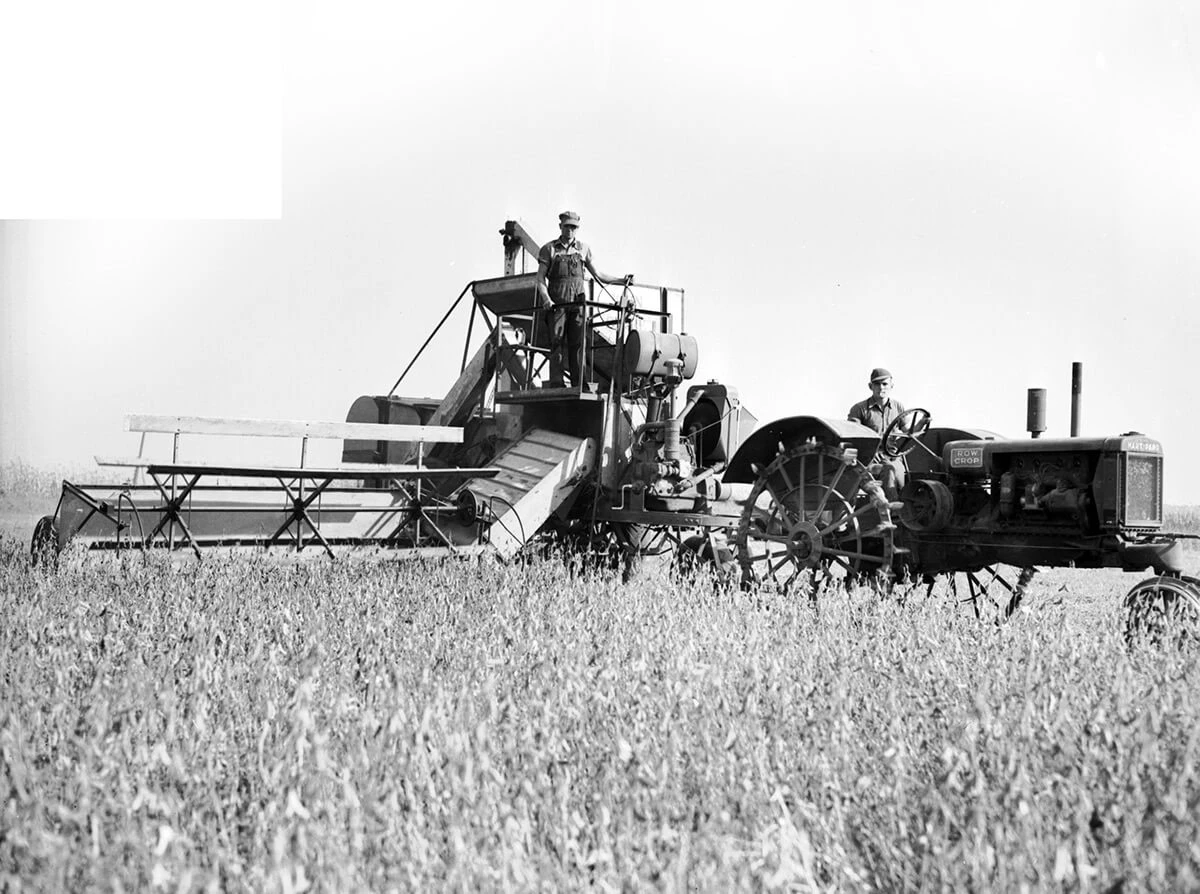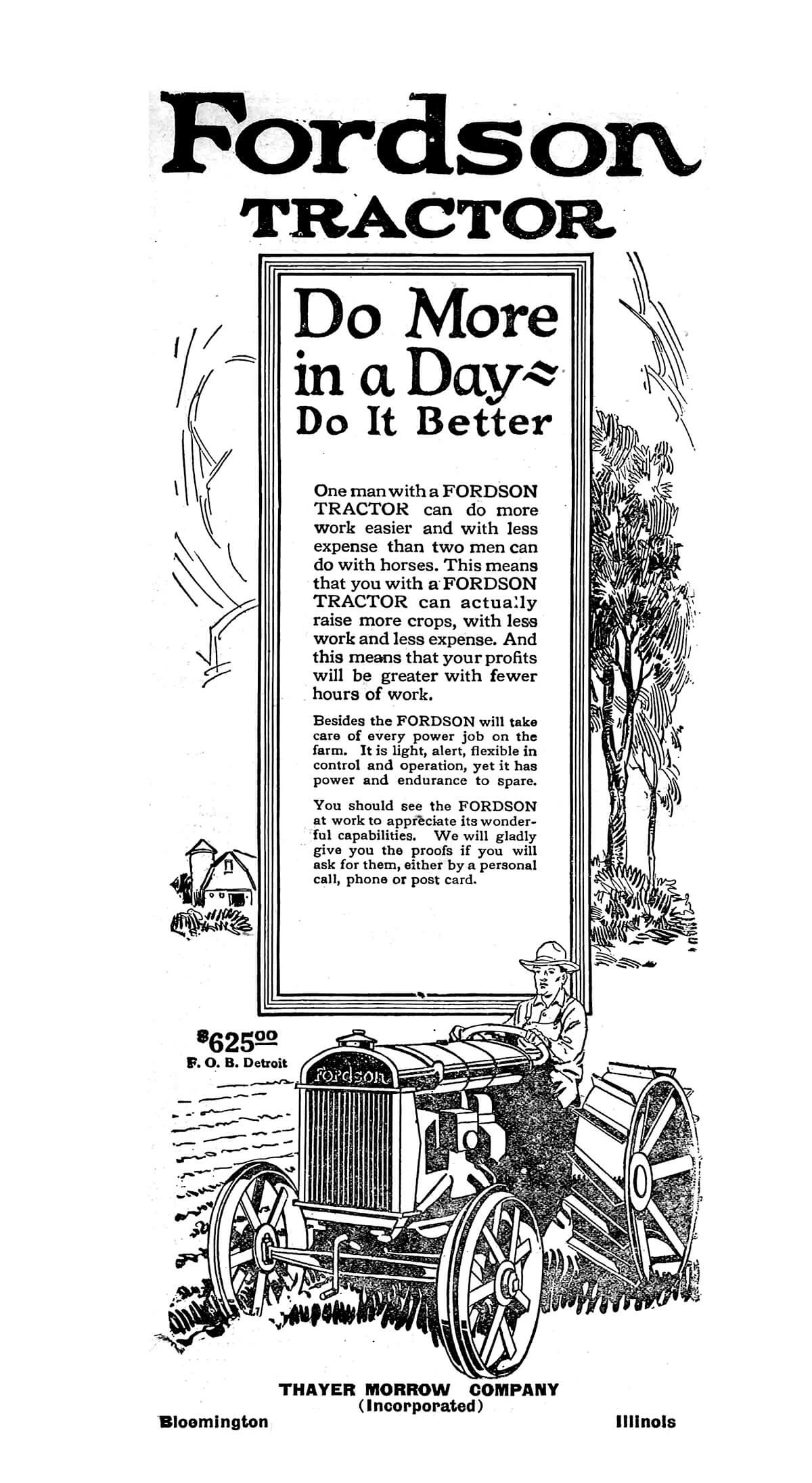The Cost of Farming – Tractors Replace Animal Labor
Corn Dryers
Corn dryers like this one were used to dry selected ears of corn. The seed was then used for the following year’s crop. Dryers became obsolete as farmers began to purchase hybrid seed instead of drying their own seed.
What did it cost?
$820
Cost in 1913$25,431
Equivalent cost in 2023Clod Crusher
As tractors became more powerful, McLean County farmers took advantage of that power.
In 1938 a clod crusher was introduced that smoothed the ground in preparation for planting. By using three units together, tenant farmer Delmer Sutter cut in half the time required to prepare a good seed bed. He also reduced fuel and labor costs.
What did it cost?
$223
Cost in 1940$4,891
Equivalent cost in 2023Gas Powered Tractors
Gas powered tractors, first developed in 1892, were expensive and big. They slowly got smaller and more affordable. By 1915 a number of McLean County farmers had invested in one.
Commercially produced tractors were first marketed in the early 1910s. By 1917, when Henry Ford introduced the Fordson, many smaller companies were building successful and more affordable tractors.
In Bloomington the Illinois Tractor Company had some success.
What did it cost?
$925
Cost in 1913$28,687
Equivalent cost in 2023Combines
Small grain harvesters that combined the cutting and threshing of wheat, oats, rye, and soybeans into a single machine (thus called a combine) were first available in 1930. These machines were pulled by a tractor. Self propelled combines were first marketed about 1940.
 Making a Home
Making a Home
 A Community in Conflict
A Community in Conflict
 Working for a Living
Working for a Living
 Farming in the Great Corn Belt
Farming in the Great Corn Belt
 Abraham Lincoln in McLean County
Abraham Lincoln in McLean County
